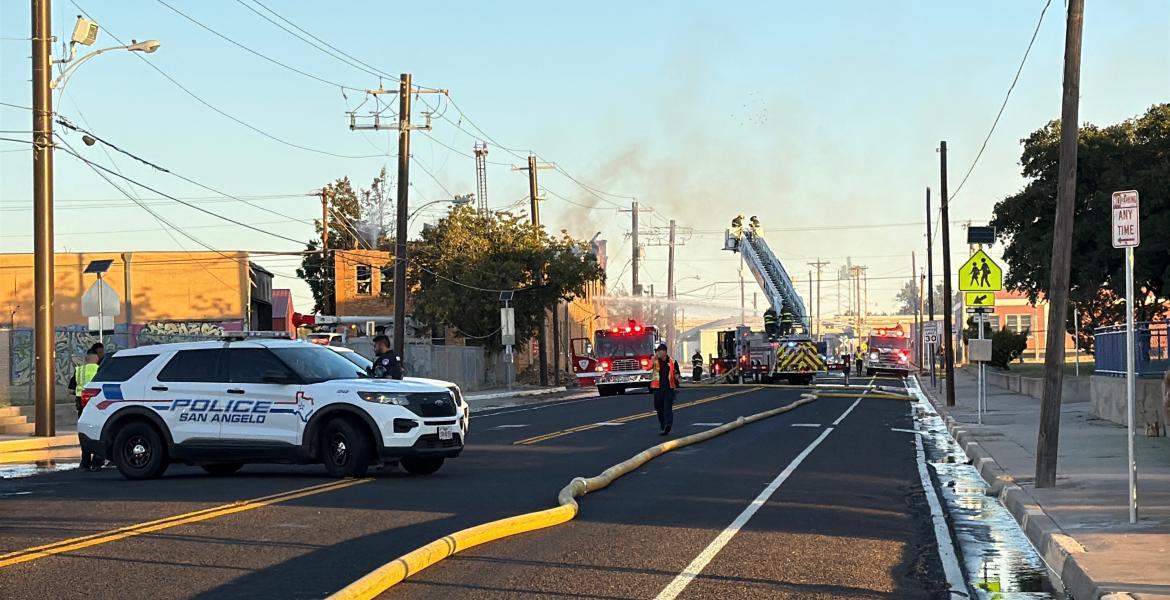SAN ANGELO, TX – Heroin, known as the cheaper alternative to prescription opioids, continues to wreck the lives of addicts and their families as heroin usage continues to increase. Experts say this additive opioid derivative has seen a major spike, especially in adults ages 18-25. Because there are now stricter mandates on opioid prescriptions, many people who became chemically dependent on them either had their prescriptions reduced or terminated, leaving them to find another alternative.
According to statistics provided by the Center for Disease Control, between 2002 and 2014, heroin usage has witnessed an increase of 109 percent. The data revealed that in 2002 the annual average for heroin use per 1,000 individuals was 3.5 percent. By 2013 that number increased to 7.3 percent. Females also showed a 100 percent increase compared to the 50 percent found in male demographics.
Even though heroin is more prominent in urban areas, according to several sources, the CDC data shows that heroin does not discriminate based on income. In the three categories presented, Less than $20,000, $20,000–$49,999, and $50,000 or more, all income levels experienced an increase of anywhere between 60 to nearly 80 percent. Heroin, however, continues to be more prevalent in lower income homes, but it continues to be on the rise across the spectrum.
Heroin is a drug that doesn’t act alone. Most people who become addicted to this drug previously used or abused other types of drugs. The CDC reports that 9 out of 10 heroin users have at least tried another drug, and 45 percent of people addicted were also addicted to prescription opioid painkillers.
“Someone with a heroin addiction might have started off with a prescription drug addiction,” said Paulette Schell, Program Development Director with the Alcohol and Drug Abuse Council for the Concho Valley (ADACCV).
Heroin was developed after scientists and experts found a way to extract morphine from poppy plants and began to administer it as a way to manage pain, and, soon after, patients became addicted. The National Institute on Dug Abuse reports that the earliest case documented of a patient visiting a hospital to solve a heroin dependence was in 1910 at Bellevue Hospital in New York City.
“Addiction is a chronic brain disease,” Schell said.
What makes this drug so dangerous is the lasting and impactful damage it can have on the brain of an addict who consumes the drug regularly. When heroin is introduced into the body and it reaches the brain, it is converted into morphine, causing users to feel a rush of pleasure. By targeting specific receptors that respond to this drug, a person can become addicted very easily and experience withdrawal. Undergoing withdrawal isn’t easy, and the physical dependency that is created in heroin users can make it very hard to leave the addiction behind, but it’s not impossible.
“People with addiction issues, they recover; treatments work and people can live long healthy lives,” Schell said.
ADACCV serves primarily the counties from the Concho Valley, but patients with a variety of addiction issues seek help there from all over Texas. In the 2016 Fiscal Year, the agency provided treatment services to 443 clients with 274 coming from Tom Green County. By offering both in-patient and out-patient care, the staff at ADACCV are able to provide the best treatment option for each of their patients. In in-patient care, the amount of males and females varied slightly each, reaching 164 and 124 respectively. Ethnically speaking, 60 percent of the patients were Caucasian Non-Hispanic, 37 percent were Hispanic, and 2 percent were African American.
The staff at ADACCV note that heroin addiction is a problem that can impact the lives of an entire community, so it is important for communities to learn about this drug and the terrible side effects it can cause in users. For some time, it was the main drug of the 1970s and 80s, but declined in popularity. Today, because of opioid pain pill addiction, it's becoming the common drug of choice. As a result, physicians are doing their part by ensuring opioid drug prescriptions are not as constant as before and are given to patients who can manage their medication correctly.
Unfortunately, anyone can become addicted to heroin. In 2013 nearly 170,000 individuals ages 12 and older had experimented with heroin for the first time, according to DrugAbuse.com.
Here are some important factors to keep in mind with heroin addiction:
- People addicted to alcohol are 2x more likely to be addicted to heroin.
- People addicted to marijuana are 3x more likely to be addicted to heroin.
- People addicted to cocaine are 15x more likely to be addicted to heroin.
- People addicted to prescribed opioid painkillers are 40x more likely to be addicted to heroin.
“It’s a public health issue; it’s a crime issue; it’s an education issue; it affects everyone,” Schell concluded.
Subscribe to the LIVE! Daily
Required






Comments
Listed By: Ronald Herring
I find it lacking - this definitely is an addiction - but it can't be totally blamed on pain pills. It is a lack of self control in many cases. The travesty of all of this attention to the heroin epidemic is that people who need or will need medication will end up NOT being able to get medication to alleviate true pain and suffering because of those who lack self control. You need to fess up to the facts and quit laying all the blame on doctors and the medical community. My rant!
- Log in or register to post comments
PermalinkWhen you do go to the ER with a serious, legitimate need for pain relief and you have no history of doing so or abusing the system, it is INCREDIBLY frustrating to wait for hours on end for relief because of this epidemic. I have a hard time understanding how a "professional" would be so out of touch with the reality of having to deal with kidney or gall stones that they refuse to treat the pain in direct contradiction of the hospital's own policy. IT HAPPENS ALL THE TIME, and usually, as you stated, to the people who NEED relief from pain as opposed to those who WANT relief from their addiction cravings. I just spent time in ER with a doctor, who refused for hours, to address my stone pain, even after imaging showed proof positive what the cause of the stated pain and high blood pressure was. Not only that, but I had to get through the rest of the day until the specialist could see me. Thank God I could get in the same day--I was very lucky. My grandmother, battling cancer that will eventually take her life, is addicted to morphine--true. But, this pain relief has officially escalated to end-of-life palliative care. Her situation is vastly different from the junkie shopping doctors for their next hit so they can dodge all the rest of their adult responsibilities. There has to be some level of understanding, review of previous history, and just simply acknowledging the facts of the lab reports they receive. It is cruel and inhumane to deny proper pain treatment to those suffering from a terminal illness or (hopefully) short-term, clear-cut prognosis.
- Log in or register to post comments
PermalinkPost a comment to this article here: